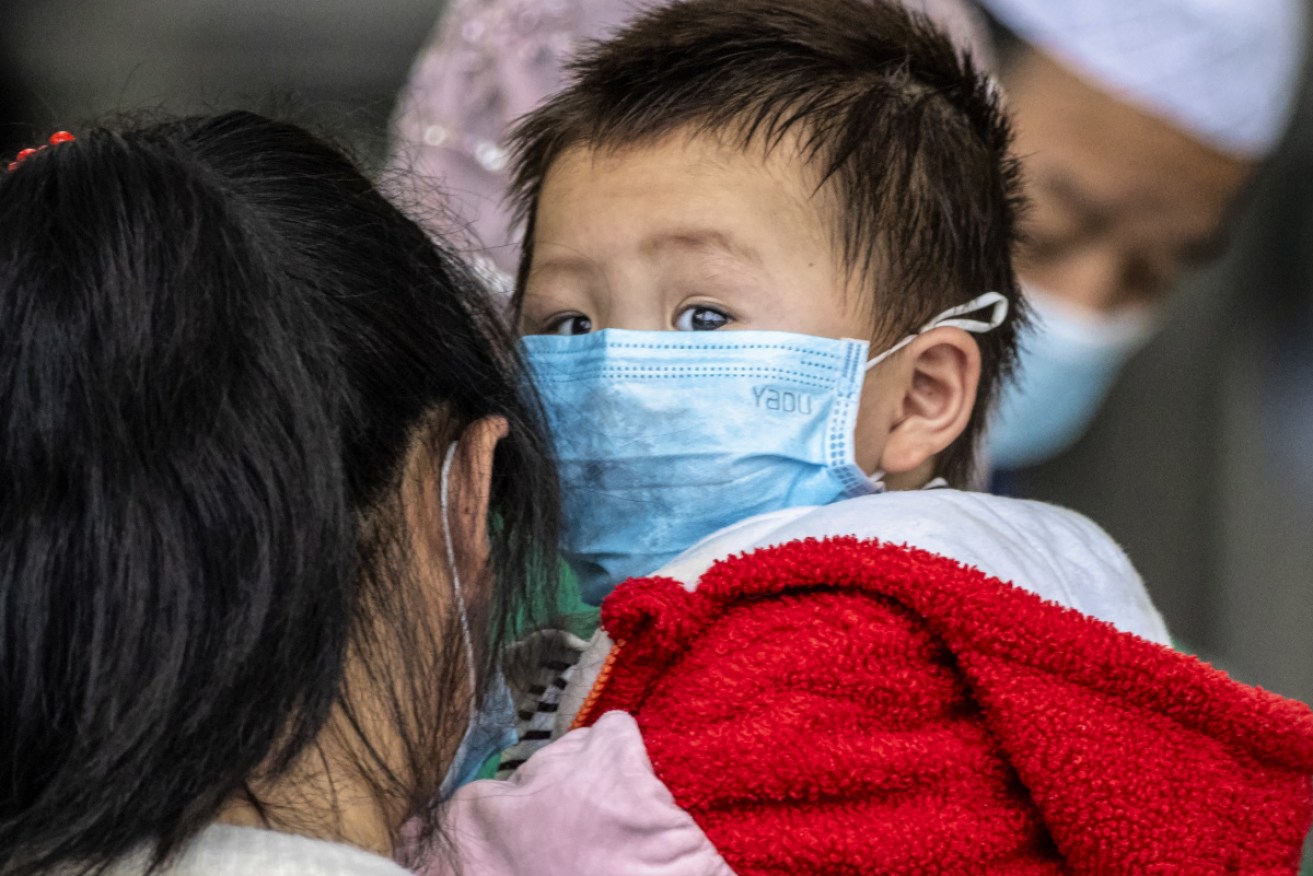Bali tourist tests positive to coronavirus as more than 14,000 new cases confirmed


The sharp rise in the number of positive cases in 24 hours may be due to a new ‘methodology for counting infections’. Photo: AAP
A Chinese tourist who was holidaying in Bali has tested positive to coronavirus as the number of new cases rises sharply by more than 14,000 in the past day.
On Wednesday night, the Jakarta Post reported the Chinese national visited the popular Indonesian tourist hotspot on January 22 and returned to Shanghai on a Garuda Indonesia flight on January 28.
According to a Weibo post verified by the Post, the Huainan Centre for Disease Control said “the patient was found to have been infected with the virus that causes the disease” on February 5.
The latest case comes as central Hubei province’s health commission said a further 14,840 cases were detected, taking the total in the province to 48,206 and the total number of cases worldwide to 60,239.
Another 93 people have tested positive to the virus, now officially known as COVID-19, outside the region.
And the total number of deaths has risen by 242 to 1365, with only two recorded outside China, one in the Philippines and one in Hong Kong.
Thursday’s massive jump in positive tests came as health officials in Hubei said they had change the method of diagnosis of confirmed cases of COVID-19.
Meanwhile, The Associated Press reported 44 more patients on the stricken Diamond Princess had tested positive for the disease on Thursday.
Of the 3700 passengers and crew aboard the liner, 218 people of the 713 tested have been infected with the virus. They have been taken to local hospitals.
Japanese Health Minister Katsunobu Kato said five patients sent to hospitals earlier had severe symptoms, were on artificial respirators or in intensive care.
He also said the government had decided to allow passengers older than 80 to get off the ship if they wished to do so, after testing negative for the virus.
Results of tests on about 200 eligible passengers are underway. Those with chronic health problems or in cabins without operable windows will be given priority.
Mr Kato said the measure was to reduce health risks of passengers stuck in rooms under difficult conditions. Those released will be asked to stay at a designated facility until the end of their quarantine period.
A realtime data map from Johns Hopkins University (see above), which is collating data from the World Health Organisation and other official sources, including the Centres for Disease Control and Prevention, shows the number of people testing positive for COVID-19 rose from 45,212 [on Thursday morning] to 60,239.
The grim new tally came a day after China had reported its lowest number of new coronavirus cases in two weeks, bolstering a forecast by Beijing’s senior medical adviser that the outbreak might end by April.
But the 2015 new confirmed cases reported in mainland China on Wednesday was dwarfed by the 14,840 new cases reported in Hubei alone on Thursday.
It was not immediately clear how the new methodology affected the results, nor why the death toll rose so sharply.

There are 1100 beds set up inside the Wuhan Sports Centre. Photo: AAP
Federal government considers extending travel
Meanwhile, the travel ban preventing Chinese visitors and students from entering Australia appears set to be extended as part of the government’s response to the coronavirus, even as pressures on the economy mount.
“The current ban extends to this weekend and we will be consider those issues on the best medical advice,” Prime Minister Scott Morrison said on Thursday.
The national security committee met on Thursday afternoon, and was expected to end the ban, following the advice of medical experts.
The virus, on top of this summer’s bushfires and a long-running drought, is having huge financial impact on the economy, and may even see the government forgo its much-promised budget surplus.
The ramifications are particularly bad for Australia’s university sector, which has 68,000 Chinese foreign students locked out because of the travel ban, but the tourism and hospitality sectors also are suffering.
“The timing for Australia is unique as opposed to the US or Canada, because of course we are at the start of our (education) year, so the timing is probably the worst possible outcome,” Vicki Thomson, chief executive of the Group of Eight universities, told ABC radio.
-with AAP








